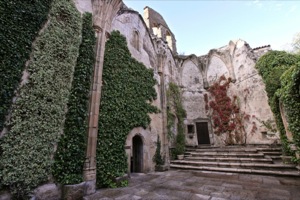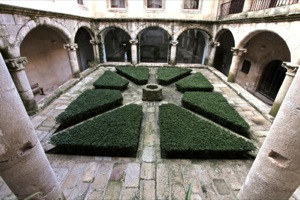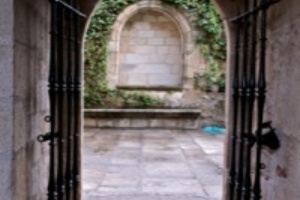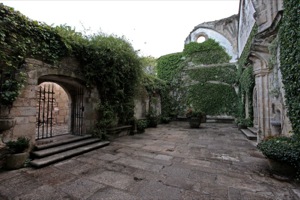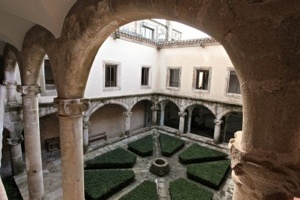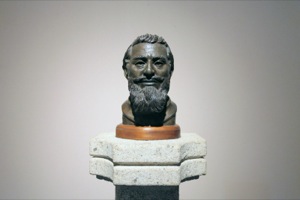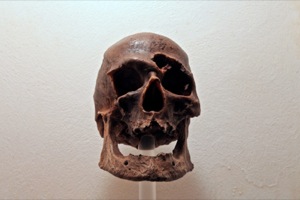Art and culture
Coria Museum
Personalities such as Father Bartolomé de las Casas or writers such as Pablo Neruda were crucial to the creation of a mixed culture
- Explore
- Museo de la Coria
A link between Extremadura and Ibero-America
Location and Contact:
- Tel.:+34 927 32 18 98
- Email: esther@fundacionxavierdesalas.com
- Website address: www.fundacionxavierdesalas.com
- Opening times
Weekends and public holidays:
11.30am-2pm.
-
Personalities such as Father Bartolomé de las Casas or writers such as Pablo Neruda were crucial to the creation of a mixed culture
The Coria Museum is located in the former Convent of San Francisco el Real, also known as the Convent de la Coria, which was built in the 15th century for the Clarissa nuns. They abandoned it during the War of Independence and Xavier Salas recovered it in 1969; he restored it, made it the headquarters for his foundation and turned it into a museum.
Located in the historic quarter of Trujillo, next to one of the gates to the city, the Coria Museum brings together what is most important about the relationship between Extremadura and Ibero-America, fruit of which the mixed culture was born.
This museum is mostly made up of educational panels. Amongst the most outstanding items, the bust and reproduction of Francisco Pizarro's skull, donated by the University of Florida in 1986.
One of the rooms is dedicated to people who were decisive in the new common culture. Father Bartolomé de las Casas, defender of the native Americans; Sister Juana Inés de la Cruz, Ruben Darío and Pablo Neruda, for their literary merit. It is one of the most interesting parts of the museum.
-
- Origin:
-
- 15th century
- Construction:
-
- Convent
- Monastery
- Walls
- Period in history:
-
- 15th century
- Name:
-
- Open museum
- Private museum
Accessibility:
- Admits guide dogs
- Access ramps
Services:
- Conference Room
Theme:
- Art and culture
Gallery:
More suggestions
-
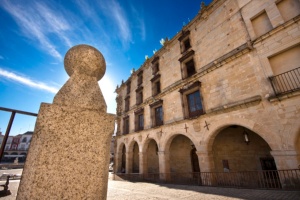
Casa-Palacio Marqués de la Conquista
Its impressive façade captures the attention and awakens the interest of any visitor to Trujillo.
-
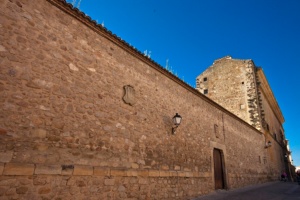
San Carlos Palace
This beautiful palace was built on the site of an ancient Visigothic fortress. It boasts a Renaissance façade and an inner courtyard surrounded by Ionic columns.
-
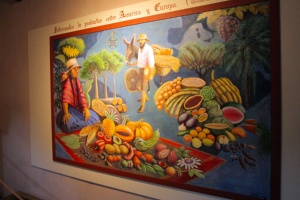
Pizarro House-Museum
Trujillo offers its visitors the legacy of the great discoverer who left its streets to take part in one of the greatest adventures in history.
-
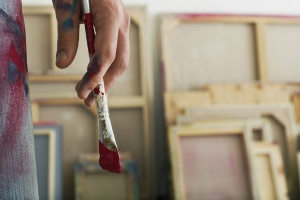
Rural Ethnographic Museum
The rural ethnographic museum offers an interesting and highly educational journey through the rural lifestyle of times gone by. Suitable for all ages.
-
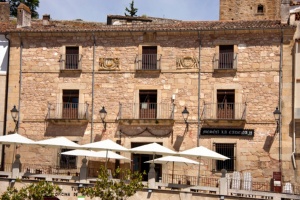
La Cadena Palace
Built as a residence and administrative centre for the landlords, the interesting feature of this palace is the paintings to be found in the chapel.
-

San Carlos Palace
This beautiful palace was built on the site of an ancient Visigothic fortress. It boasts a Renaissance façade and an inner courtyard surrounded by Ionic columns.
-
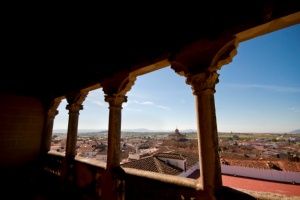
Juan Pizarro de Orellana Palace
This beautiful Renaissance palace, built in Trujillo in the 16th century, was refurbished by Juan Pizarro, the explorer of Peru.
-
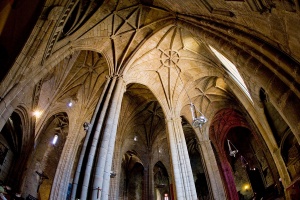
Casa palacio de Chaves el Viejo
The Catholic Monarchs spent long periods in this building with Gothic and Mudejar details.
-
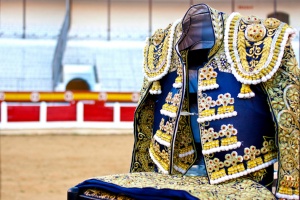
Trujillo Bullring
Constructed in the mid-19th century, this bullring is the venue for important festivals
-
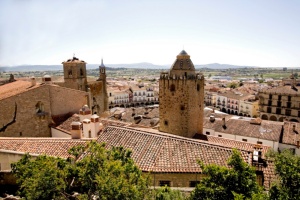
Torre del Alfiler de Trujillo
Uno de los edificios más singulares del centro histórico de la ciudad. Debe su nombre a una varilla metálica clavada en su cúpula.
-

Casa-Palacio Marqués de la Conquista
Its impressive façade captures the attention and awakens the interest of any visitor to Trujillo.
-
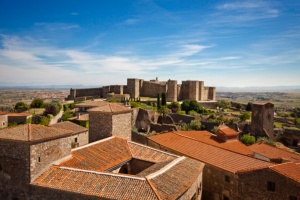
Trujillo Castle
Located in the province of Cáceres, Trujillo Castle was built over an old Moslem fortress of which a number of remains have been preserved.

